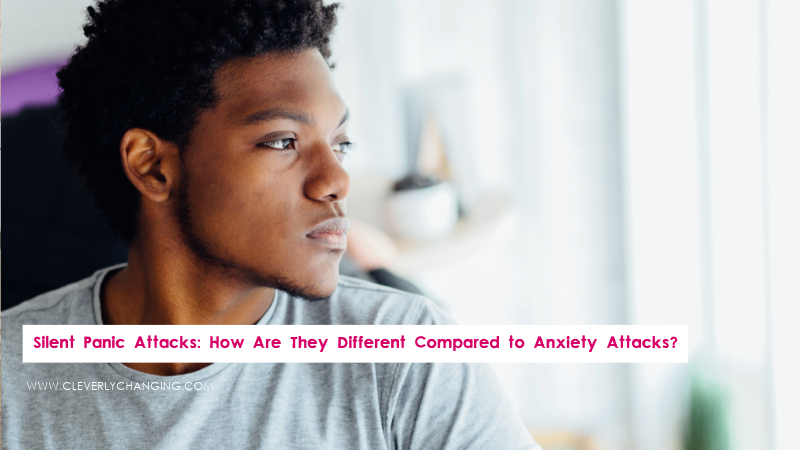Panic attacks involve sudden, intense physical and emotional symptoms like a racing heart, chest pain, shaking, shortness of breath, and an intense feeling of fear or doom. They tend to start rapidly and peak within 10 minutes, though residual effects can linger for hours. Silent panic attacks, also called quiet panic attacks or internally experienced panic attacks, involve the same intense surge of anxiety internally, but there are fewer external physical manifestations.
People experiencing silent panic attacks often feel confused, detached from reality, and convinced that something is very wrong inside them, even if outwardly, they may appear fine. Though less noticeable to outside observers, quiet panic attacks are equally frightening to those going through them, and getting help for these attacks is just as important as for outwardly obvious panic attacks.
Understanding Silent Panic Attacks
Silent panic attacks are episodes of intense anxiety and fear. A person struggling with this will often suffer in silence. For those around them, a silent panic attack is almost impossible to detect. The person may just appear distracted or tired. They want to cry out for help yet also fear embarrassment or that their feelings may be dismissed.
A silent panic sufferer can feel intensely alone with their experience as they try to function and mask their emotions. Often they will wait until they are by themselves before fully giving in to the crushing weight of the attack, suffering alone in silence behind a calm or composed façade. Every person should know the signs of a silent panic attack other than the physical.
Thoughts and Emotions
In addition to physical manifestations, panic attacks involve fearful thoughts, feelings of doom, and a sense of losing control. While regular panic attacks cause people to cry out or express their emotional turmoil aloud, those having silent panic attacks often suppress outward displays of emotion. They may smile and carry on conversations to hide their inner experience of dread, anxiety, depersonalization, or fear they are dying. Their minds race with fearful thoughts, but they keep it bottled up inside.
Triggers
For people prone to panic attacks, common triggers include public speaking, crowded spaces, health issues, or work stressors. Silent panic attacks also arise in response to situations that make people feel anxious and trapped. However, due to social expectations, many attempt to ignore the rising panic and don’t express what they’re going through internally, making the panic attack “silent.” Recognizing personal triggers allows people to use coping techniques to calm silent panic.
Impact and Risks
Without outward symptoms, silent panic attacks often go undetected, leaving people to suffer alone. Over time, suppressing panic can increase anxiety, depression, substance abuse risk, and even suicide risk if people feel hopeless to control recurring silent attacks. Learning to open up, name fears, develop coping strategies with professional help, and have compassion are keys to overcoming silent inner turmoil. Recognizing silent panic in friends and loved ones through changes in behavior or communication gaps enables offering help before inner distress becomes overwhelming.
Comparison to Anxiety Attacks
While panic and anxiety attacks share features like acute fear, nausea, dizziness, and racing thoughts, anxiety attacks typically build up gradually, while panic attacks have a sudden, intense peak. Anxiety attacks also generally pass more quickly and involve fewer physical effects. Furthermore, anxiety attacks may have an identifiable trigger, like public speaking fear, while panic attacks can arise with no obvious cause. Both types of attacks benefit from therapy, lifestyle changes to reduce stress, identifying personal triggers, breathing exercises, and seeking support.
Silent panic attacks can be challenging to detect but deeply distressing for those experiencing profound fear and physical symptoms internally without outward displays. Recognizing signs, minimizing shame, and providing compassionate support enables healing. Understanding the differences between silent panic, anxiety, and typical panic attacks leads to better identification and treatment options.

